
E.W. Scripps: A Company At Home With Continuous Change

 From the beginning, there are two things you need to know about The E.W. Scripps Co.: that journalism is a sacrosanct calling and mission for its people there, and that this 144-year-old company intends to be around for a very long time to come.
From the beginning, there are two things you need to know about The E.W. Scripps Co.: that journalism is a sacrosanct calling and mission for its people there, and that this 144-year-old company intends to be around for a very long time to come.
Nearly everything else there is to be said about Scripps and the heft of innovations and dramatic business pivots it has made must be filtered through these two, ineluctable facts. Lock in on any single facet where the company is working to reinvent broadcasting rules — the shape and form of the newscast, the way advertising is sold, who will be leading this industry and where and how they will be doing their jobs — and all of it traces back to the company’s bedrock foundations of journalism and self-perpetuation.
Scripps is TVNewsCheck’s Station Group of the Year for 2022, the only broadcaster to be twice recognized as such after first being honored in 2017. This time around, the distinction is supported by an extraordinary catalog of bold moves made and efforts underway. All are geared to following a fast-moving consumer, revolutionary changes in technology and dramatic upheavals in workplace culture towards a sustainable, profitable future.
In particular, this year’s distinction stems from Scripps’ unusually deep commitment to long-term strategizing while also focusing on delivering shorter-term shareholder value; experimenting toward a reinvention of the local and national news product in its 41 markets and 61 stations; building robust, simultaneous strategies around over-the-air and streaming content; and being an early mover on a national networks play — Scripps now has nine — to augment its local stations.
The company is also recognized for taking a lead role in adopting and finding future business prospects for NextGen TV; leading the industry toward models of pay-for-performance and outcomes-based selling of its advertising; fostering an exceptional workplace environment with clear pathways for career progression; and embracing and evolving strategies around equity, diversity and inclusion that are shaping both its on-air products and the composition of the company and its leadership.
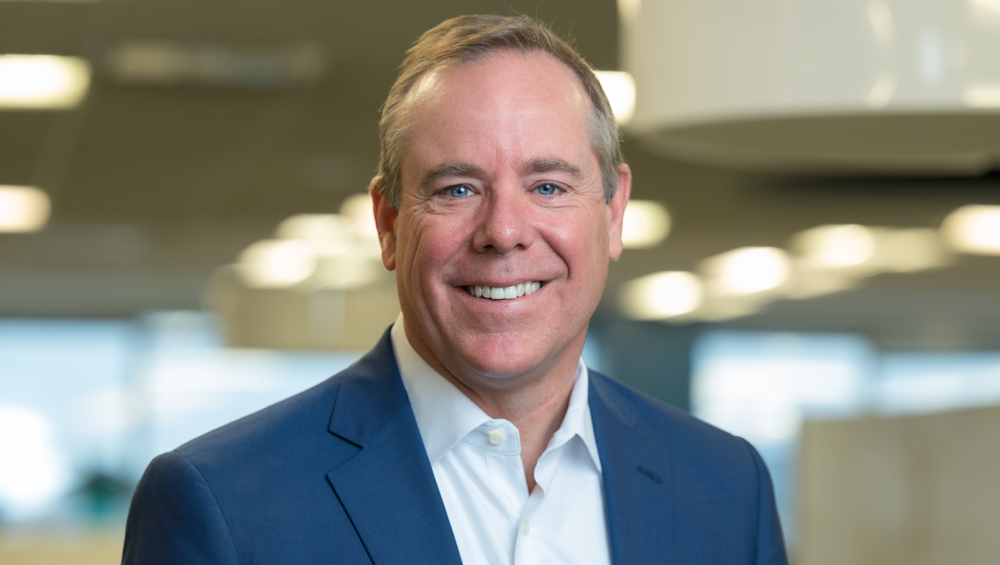
Brian Lawlor
“We are authentic to who we are,” says Brian Lawlor, president of local media, which reflects a simple and essential truth about Scripps. One hears it echoed again and again in interviews with its leaders and employees.
A Singular Culture
In a market where short-term thinking and knee-jerk decisions tend to rule, Scripps has long been an outlier in taking a long-term approach guiding how it has entered and exited businesses and directed where it focuses its innovative efforts.
“I have been at this company for 17 years, and one of the things that I have appreciated is that it does take the long view,” says Lisa Knutson, president of Scripps Networks. “Our endgame is perpetuation, so if we are going to be around another 140 years, how do I need to position this company today for success in the future? You have to balance short- and long-term value creation along with perpetuation.”
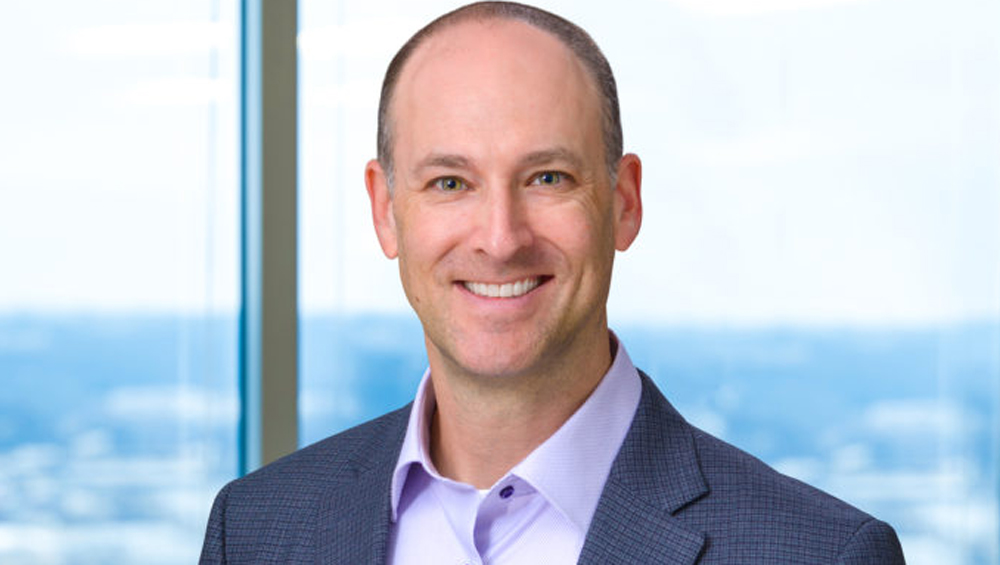
Adam Symson
Adam Symson, president and CEO, says he’s lucky enough to have investors who understand the company leadership’s penchant for the long view.
“You get the investors you deserve,” Symson says, echoing Warren Buffet. “We have very long-term investors in the Scripps family. They are controlling shareholders who have been doing this for 140 years. While I recognize and can sometimes get frustrated by the very near-term focus of Wall Street, I also talk to investors all the time who like that long-term focus and want to partner on it.”
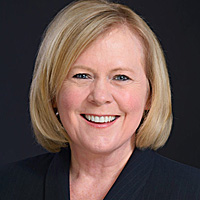
Lisa Knutson
Journalism is just as integral to Scripps’ identity, going back to the company’s origins as a 19th century penny press in Cleveland, Ohio. “It was a blue-collar newspaper meant to target a segment that was not represented by the newspapers back then,” Lawlor says. “That is still what Scripps is all about. We have a lot of different businesses, platforms, technologies and devices, but at the end of the day, we are a journalism company. We create content that engages and brings communities together and tells stories.”
Rebooting The News
Sean McLaughlin, VP of news, is at the center of a maelstrom of change. News delivery modes and platforms are transforming, so is what viewers find to be relevant and the kinds of approaches his local stations take towards storytelling.
As he works towards iterating Scripps’ news products around all that change, he takes comfort in a constant: “There is more durability there than many may realize in the expertise that we have in our communities, and we use that to cultivate the journalism that we do,” he says.

Sean McLaughlin
McLaughlin’s daily remit is to deconstruct and rebuild conventions that local newscasts have featured for decades. Some of that work is already visible on its airwaves, he says. Gone are scare tactics and the proliferation of crime stories across every A-block. Gone, too, are A-blocks inundated with over a dozen rapid-fire stories.
“Now it is more about the service we provide in making sense of the chaos, the ability to have an expertise and really know the markets we serve and be able to help provide perspective and context to major stories as they happen,” he says.
McLaughlin says the reality is that most people aren’t consuming two newscasts a day anymore but more likely two every few weeks, so newsrooms need to pick longer-term, more resonant stories and stick with them over time, ever deepening their coverage.
He’s also shifting anchors out from behind their desks and into the field, giving them more reporting responsibilities and opportunities to connect directly with their communities. Newsrooms have been tasked with diversifying their sources and experts, and groups in each market are regularly empaneled to get feedback on what newsrooms should be looking at and how good a job they’re doing when they look.
Scripps is also looking at serving its larger geographic DMAs with more hyperlocal newscasts. These programs, known as ScrippsCasts, recognize, for instance, that people in Waco, Texas, may not want to share their local news real estate with College Station when there are so many stories coming out of each DMA-cohabitating city.
McLaughlin says that while many of these efforts have “required absolutely rewiring newsroom processes,” both the C-suite and news directors have had his back and embraced the need to keep evolving rapidly.
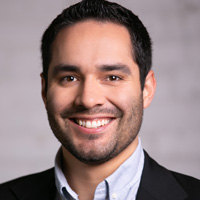
Socrates Lozano
On the national side, Socrates Lozano, senior director of ScrippsCast and newsroom innovation, is doing much of the same work across both OTA and streaming content, reconciling the separate workflows along the way. “We are trying to bridge the gap between streaming and over-the-air television and trying to create one cohesive strategy from workflows to content,” he says.
Lozano, a former TV news photographer who is based out of Scripps’ national content team in Denver, says he’s spending a lot of time inside newsrooms, teaching them how to modernize content, using different equipment to shoot and finding new ways of shooting. “We are starting nuts and bolts from beginning to end, deconstructing how we would normally approach a story and changing that,” he says.
“The whole reason why I am here is to be part of the change and creating a more sustainable future so that this business can continue, so journalism can continue within the communities we serve,” he says.
McLaughlin is on the same page. “I feel like my job is to save local news,” he says, “to continue to find ways to make local news more relevant and impactful in an environment where it is very difficult. This is a company that gives me the tools and opportunities to do that.”
A National Networks Strategy
 As it works to reinvent local, Scripps has simultaneously been building a national networks strategy marked by its purchase of Katz Broadcasting in 2017 and Ion Media in 2020. Coupled with its previous purchase of Newsy in 2014, which Scripps has subsequently rebuilt as a national news network with more than 16 weekday hours of programming, the group now has nine networks in its portfolio.
As it works to reinvent local, Scripps has simultaneously been building a national networks strategy marked by its purchase of Katz Broadcasting in 2017 and Ion Media in 2020. Coupled with its previous purchase of Newsy in 2014, which Scripps has subsequently rebuilt as a national news network with more than 16 weekday hours of programming, the group now has nine networks in its portfolio.
Symson sees this effort as a scale play, one that will help with Scripps’ longer-term sustainability. “We need to have the margin for the mission,” he says.
He’s gambling that “plus fatigue,” or a weariness over rising costs for subscription video on demand services, will drive many cord cutters and cord nevers back to over the air television. Scripps reasons that the lure of local news and sports will be a key motivator.
Knutson adds that in a recent month, Scripps’ nine networks had 70 million people engaged for an average 11.5 hours per month, not a bad place from which to start.
Scripps’ most recent move on this front is the creation of a new division, Scripps News, that will roll up Newsy (which will be rebranded as Scripps News on Jan. 1, 2023), Scripps’ Washington bureau and the company’s Local News national news desk, based in Denver, into a single division. The move is aimed to give Newsy, fresh from a major reboot, more of a direct connection with the Scripps brand and to further facilitate the deeply wound collaborations across the company’s national news-producing entities.
The Free TV Project
 Scripps’ bullish OTA strategy is entwined with a more recent effort, The Free TV Project, designed to educate and inform consumers about the options available to them just a digital antenna away. The company is spending $20 million on the project, which combines multichannel marketing with efforts to work with big box retailers and OEMs to facilitate the process of connecting consumers with the right antennas for their locations and devices.
Scripps’ bullish OTA strategy is entwined with a more recent effort, The Free TV Project, designed to educate and inform consumers about the options available to them just a digital antenna away. The company is spending $20 million on the project, which combines multichannel marketing with efforts to work with big box retailers and OEMs to facilitate the process of connecting consumers with the right antennas for their locations and devices.
Amanda Brown, VP consumer strategy and insights, is helming the project. “We are really intending to help drive awareness around the fact that there is access to free TV and to help educate them on the benefits so that they understand how to set up a digital antenna and get the most out of over the air TV,” she says.
It’s a process not without considerable friction, she notes, so the project’s website aims to connect consumers with information — and potentially installers — specific to their situation and area.
Brown is also working with retailers and manufacturers to help educate consumers about antennas at the point of sale when buying new TVs and reducing the amount of trial and error in finding the right match. “We are trying to reduce that friction both from a purchase perspective as well as an installation perspective,” she says.
It’s an effort in which Scripps hopes eventually to enlist more across the industry to everyone’s mutual benefit. “We are taking the first step and proving out what is working and what is not working, and it’s our intention that other broadcasters, manufacturers and retailers will partner with us,” Brown says.
NextGen TV Leadership
While many broadcasters have been shouldering the work of NextGen TV’s rollout, Scripps has taken a leading role in holding the industry together in advancing the technology — and its business cases — together.
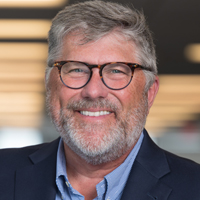
Kerry Oslund
“We are using our marketplace position as a company that you can trust to make a lot of partnerships and collaborative efforts, bringing a whole bunch of participants together and making something happen,” says Kerry Oslund, VP of strategy and business development, who has been Scripps’ point person on NextGen TV.
One of the primary examples of that role is at Detroit’s Motown 3.0 test track, on which Scripps has collaborated with Graham, Fox and CBS on finding automotive applications for the ATSC 3.0 technology, which Oslund sees as particularly promising from both a technical and revenue standpoint.
“With the need for OTA updates, the amount of data transfer happening in the space now and what is projected to happen, the math is just too compelling for the auto industry or any other industry, including CDNs, to turn away from,” he says.
Scripps is also spending attention on addressable advertising’s potential via the technology and on creating differentiated viewing experiences for its early adopters, Oslund says, and it will continue to help coalesce industry collaboration on developing both.
“We have had lots of cooperation, industry-wise, and that will continue to be our role,” Oslund says. “But I have compared it to everybody jumping out of an airplane and holding hands, but at some point, you have to pull your own ripcord.”
Pay For Performance Advertising, Outcomes-Based Selling
Scripps has taken a leading role in the spot advertising world, where it has been driving forward a pay-for-performance model the company thinks is well overdue in the industry.
“Several years ago, a media director said to me, advertisers feel like they come to you, they buy a car, and you give them back a car with three wheels,” says Missy Evenson, VP sales, local media. “It was true because we were spreading under-delivery weight into the future, and some advertisers had two or three years of prior under-delivery weight.”
Scripps’ response, Evenson says, was to start selling them cars with four wheels and putting themselves on the line for what they didn’t deliver. That also meant rewriting the business rules.
“We changed the business rules that we can use every piece of inventory available to help optimize a schedule, and we are delivering,” she says. Scripps uses predictive modeling on ratings to ensure that delivery is well within acceptable ranges for agency partners.
“The other crucial part of this is with big national advertisers and using pay-for-performance, we don’t have to use as much inventory anymore to get schedules to deliver, so it has allowed us to put inventory back in the pot for local sellers to sell new local businesses,” Evenson says.
The next summit Scripps is looking to climb is around outcomes-based selling, which Evenson says would be fundamentally game changing for the industry to adopt. She uses the example of a car dealer forking over $30,000 to sell 300 trucks. “When I have the data and analytics that can really show you that we helped you to do that and you feel confident in it, then we are off to the races,” she says, noting it wouldn’t matter where a station sat in the ratings so long as the outcome can be demonstrated.
“At the end of the day, everybody wants to see that whatever dollar that they spent created some sort of outcome,” she says, “and we are trying to change the gospel of the industry.”
A Workforce Revolution
Scripps again finds itself an outlier on the front of work culture. “When we talk about culture, it comes through in each and every thing we touch, and so we want to have a very intentional focus on that partnership between product, programming and our people,” says Candace Anderson, VP of people and culture.
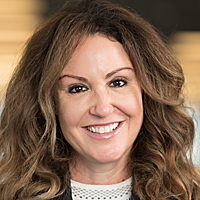
Candace Anderson
One aspect of that has been a lasting embrace of working from home, a necessity in the pandemic and now a permanent element for many parts of the company.
Anderson says that while some roles can never be virtualized, “we are committed to offering flexible work arrangements which not only come in the form of hybrid or different work locations, but also compressed work weeks and some type of flexibility in scheduling,” she says.
That flexibility is one part of the company’s response to the challenges of recruiting and retaining talent in the industry amid the full flourish of the Great Recession. The other part is a focus on career progression.
Among other tools, the company uses its own kind of internal LinkedIn for employees to share their interests, skills and aspirations to be better matched with emerging opportunities. “We want to tap our invisible talent inside the organization,” Anderson says, explaining that Scripps uses talent profiles on its employees to help them chart a career trajectory.
Scripps follows that technology side with a high-touch approach via management, allowing for more sharing of “career stories” and conversations. Those have carried all the way up to the C-suite, where CEO Symson has shared his own trajectory from investigative reporting to the company’s helm.
Company leaders including Symson, Knutson and Lawlor are regularly involved in onboarding new employees, and company earnings calls are followed by internal calls with leadership to solicit questions and ideas.
“We actively encourage people to come forward with their ideas and then really empower them to run,” Anderson says.
Equity, Diversity And Inclusion
Scripps has made a particularly deliberate effort to improve itself on the HR front around equity, diversity and inclusion (EDI), where for years it has pursued a multi-pronged approach in both news content and recruitment, retention and career advancement of underrepresented people in the company.

Danyelle Wright
“If you are building a house, you need a solid foundation,” says Danyelle Wright, VP of employment and labor law and chief diversity officer. That foundation started with a step called the “welcome table” across stations in which fireside chats and Q&A sessions were held to initially explore EDI concepts. Those were followed by a “courageous conversations” voluntary town hall series, “a real robust opportunity for employees to be provoked, challenged, ask tough questions, be heard, be seen,” she says.
Another step was the “EDI Academy,” convening smaller groups to respond to content like articles or podcasts broaching its concepts and provoking more intimate conversations. Cumulatively, this awareness campaign over the past four years set the groundwork for meaningful, cultural change across the company, which has targeted the “diversity pillars” of racial, gender, LGBTQ+ and veteran equity.
Wright keeps a constant eye on the numbers. She knows that at Scripps, of its 5,652 employees, 43% are women, 28% are people of color, 108 identify with the LGBTQ+ community and 159 have an affiliation or connection with the military. She knows the company excels at hiring, counting some big wins (39% for people of color, for example). But she’s equally focused on retention and advancement, working closely with HR and its talent profiles and career stories to help show underrepresented people an upward path, particularly around news leadership, which has been a more challenging front.
With a cadre of news leaders and directors of content strategy, Wright is also watching what goes on the air at Scripps’ news properties, regularly auditing its content to see that it’s fulfilling its stated mission to diversify sources and cover underrepresented communities.
Throughout it all, Wright says she has had the C-suite leadership support necessary to make any such initiatives really take purchase. “It can’t be an unfunded mandate, and I have had leadership support from the outset and a budget that has increased exponentially over the past four years,” she says.
Symson says there’s a simple logic behind that. “Our EDI strategies aren’t just about doing what’s right. It’s about doing what’s right for the business,” he says. “We think it can become a competitive advantage for us.
“When I feel like we have the culture of inclusivity and when people feel empowered to speak up, they are positively impacting our product and evolving it to meet the changing needs of the American consumer,” Symson says. “That is business success.”
Continuous Evolution
From rebuilding the news product to building a national content strategy, pushing the boundaries of how advertising is sold to pushing open the industry to usher in more voices and perspectives, Scripps is a company in continuous motion.
So long as that motion serves the journalism and the company’s longevity, veteran leaders like Lawlor will be among those putting their backs into it, willing to move wherever is best for Scripps and the mission.
“We don’t think that there is a final destination of what our portfolio or product line or our divisions look like,” he says. “We are really comfortable continuing to evolve.”
This is the first installment of a three-part series. You can read part two here and part three here.
































Comments (0)